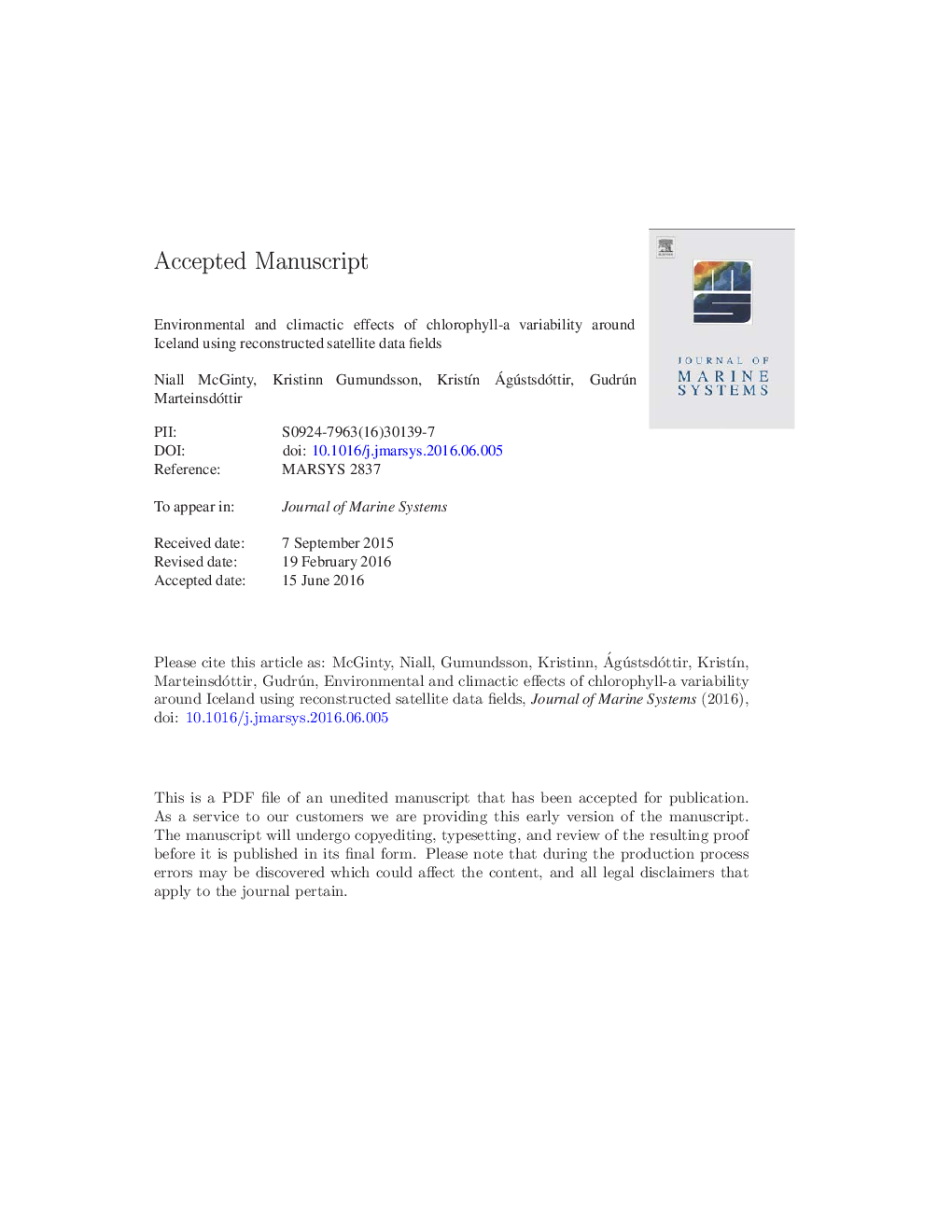| Article ID | Journal | Published Year | Pages | File Type |
|---|---|---|---|---|
| 6386617 | Journal of Marine Systems | 2016 | 38 Pages |
Abstract
While remotely sensed data greatly improves the spatial and temporal resolution of ocean surface data, many data gaps still exist, particularly in northern latitude regions. We addressed this issue by reconstructing 8-day chl-a, sea surface temperature (SST) and photosynthetically available radiation (PAR) between 1998 and 2013. Direct matchups between the interpolated and in-situ chlorophyll-a data showed stronger correlations when both data types were combined although very little variation was found for the root mean square error across space and time. Chl-a shows a strong periodicity in the south and a weak periodicity in seasonal cycle in the north. Where periodicity is strong we found that correlations with the local environmental conditions were also the strongest. Wavelet coherence patterns showed that the phase correlation between SST, chl-a and NAO was dominated by an annual periodicity in the trends although the chl-a-NAO relationship was only significant after 2005. Ten regions were defined based on the k-means clustering of chl-a. Mean spring anomalies and the phenological timing of chl-a were defined for each region. The main drivers of spring anomalies were mean SST and PAR values while the spring timing was strongly correlated with the timing of MLD and PAR reaching threshold levels.
Related Topics
Physical Sciences and Engineering
Earth and Planetary Sciences
Oceanography
Authors
Niall McGinty, Kristinn Guðmundsson, KristÃn Ágústsdóttir, Gudrún Marteinsdóttir,
